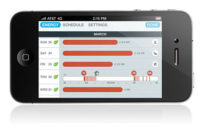Often when we are evaluating or assessing an existing building, we are on the lookout for equipment and systems that are in poor condition or approaching the end of life. While it is fairly straightforward to evaluate the condition of mechanical equipment, determining when a control or building automation system needs to be replaced or upgraded can be more complicated. Let’s look at some criteria that would drive toward a recommendation to replace or upgrade a system.
- Support. There are several levels of support required for any control system. The first level is generally within the owner’s operations team or from a local service contractor. This support is needed to make programming changes, replace controllers after failure, and to provide routine service and upgrades. The second level of support is from the manufacturer, who provides replacement parts and software upgrades. In the event that reliable local support is not available, or if the manufacturer no longer is actively supporting the product, then it is time to replace the system.
- Performance. Many times, we find systems that are serviceable but may not be fast, provide a high quality user interface, or be easy to understand or operate. A system with poor performance may be able to be improved through an upgrade, but more often than not replacement may be the only viable solution.
- Reliability. Ideally a control system should work with high reliability and require a minimal amount of regular service and calibration. Older pneumatic and electro-mechanical systems often don’t provide a high degree of reliability (or performance) and are good candidates for upgrade or replacement.
There are many goals when upgrading or replacing a control system. The most important ones are to have a system that meets the owner’s needs in terms of performance, cost, and support. We like to see any new or upgraded system follow open protocols whenever possible and to utilize a web browser interface.
Upgrades are also a great time to evaluate the benefits of integration, including putting together disparate systems and connecting in equipment for additional data.
It also is a good time to improve the system by deploying additional sensors and algorithms to allow for system optimization. A well-designed upgrade can provide the ability for enhanced operability and reduced energy use, easily paying for the upgrade cost.
There are many paths to achieving an upgrade. We recommend starting by talking with your existing system supplier to find out what options they offer. Some suppliers have a migration program that readily upgrades hardware and software at a reasonable price. Other times, it is possible to migrate older systems with the use of a web-based platform that can connect to older application specific controllers and allow for expansion using open protocols and a web based user interface.
In the most extreme cases, for example, in moving from a fully pneumatic system, the only option is complete system replacement. Each of these options has its own set of pros and cons. A complete system replacement is more expensive, but it provides for consistent system documentation and allows the same tools and parts to be used throughout the system.
We often assist the owner by developing an RFP that clearly states the requirements for the upgrade, including products, protocols, work practices, new sequences, what needs to be replaced, integrated, etc. The existing system vendor may be allowed to provide pricing for a migration platform, while other suppliers are invited to bid an all-new system. The owner can then evaluate the vendor proposals and look at which provides the best overall solution.




